Contact
birgitta.ahman@slu.se, +46 18 67 23 08

Conference abstract book (pdf) (27 Mb)
Oral presentations should not be more than 10-12 min, leaving 3-5 min for questions and discussion (except keynote lectures, that will be 40 min, and a few additional longer presentation).
Please deliver your presentation to the organizers on a usb-stick the day before your presentation (or, if you have your presentation on Monday as soon as you arrive).
Posters should be maximum 70 cm wide and 100 cm high. You will have the opportunity to introduce your poster by giving a "speed talk" about 1.5 min, with 1-3 power point slides.
Please deliver your power-point to the organizers on a usb-stick the day before your presentation (or, if you have your presentation on Monday as soon as you arrive).
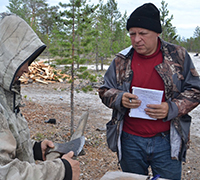 David G. Anderson holds the Chair in the Anthropology of the North at the University of Aberdeen Scotland. He is an anthropologist specializing in the circumpolar North and has written about and conducted fieldwork in Canada, Norway, and several regions of Western and Eastern Siberia. He is interested in local, indigenous understandings of both wild and domesticated Rangifer.
David G. Anderson holds the Chair in the Anthropology of the North at the University of Aberdeen Scotland. He is an anthropologist specializing in the circumpolar North and has written about and conducted fieldwork in Canada, Norway, and several regions of Western and Eastern Siberia. He is interested in local, indigenous understandings of both wild and domesticated Rangifer.
In his talk tentatively entitled "Beyond Wild and Tame" he will examine the social sensibilities that unite hunters, followers, and herders of Rangifer in both North America and Eurasia. Citing archaeological and ethnographic work, he will test the established boundaries between the understanding of wild and tame populations and suggest a relational theory for understanding this circumpolar species.
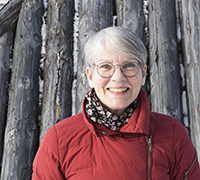 Ingela Bergman is the director of the Silver Museum of Arjeplog, Sweden, and associate professor at the Department of Archaeology and Sami studies at Umeå University. She has been the leader of a number of interdisciplinary research projects including archaeologists, historians, forest historians, ecologists and soil scientists. In her research, Ingela Bergman has focussed on Sami cultural landscapes and how people have interacted with, and influenced the long-term development of sub-arctic ecosystems.
Ingela Bergman is the director of the Silver Museum of Arjeplog, Sweden, and associate professor at the Department of Archaeology and Sami studies at Umeå University. She has been the leader of a number of interdisciplinary research projects including archaeologists, historians, forest historians, ecologists and soil scientists. In her research, Ingela Bergman has focussed on Sami cultural landscapes and how people have interacted with, and influenced the long-term development of sub-arctic ecosystems.
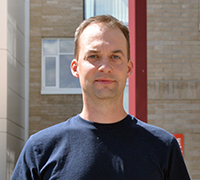 Chris Johnson is a Professor at the University of Northern British Columbia where he teaches courses in conservation biology, population and community ecology, and natural resources planning. His research focuses on understanding the relationship between human activities and the distribution and abundance of a range of mammal species. Much of that work is focused on the ecology and conservation of woodland and barren-ground caribou found across Canada, but he also dabbles with moose and mustelids. Chris is involved with a number of provincial and federal committees that work to assess or recover threatened or endangered species. This includes serving as a member of the national Committee on the Status of Endangered Wildlife in Canada.
Chris Johnson is a Professor at the University of Northern British Columbia where he teaches courses in conservation biology, population and community ecology, and natural resources planning. His research focuses on understanding the relationship between human activities and the distribution and abundance of a range of mammal species. Much of that work is focused on the ecology and conservation of woodland and barren-ground caribou found across Canada, but he also dabbles with moose and mustelids. Chris is involved with a number of provincial and federal committees that work to assess or recover threatened or endangered species. This includes serving as a member of the national Committee on the Status of Endangered Wildlife in Canada.
Caribou of all types are declining across Canada. In the last two decades some of the most closely monitored populations of migratory caribou have decreased from hundreds of thousands to thousands of animals and populations of woodland caribou continue to disappear from landscapes. These declines have garnered much attention from caribou-dependent communities, governments, and researchers. However, we still struggle to identify and apply effective solutions for this unprecedented conservation crisis. In his talk "Theory to practice: Application of the declining- and small-population paradigms to the rapid decline and hoped-for recovery of caribou across Canada" Chris Johnson will discuss the recent trends, current status, and challenges of managing and conserving Rangifer. He will discuss the potential lessons to be learned from recent declines and extirpation events and the close fit to the declining- and small-population paradigms. Drawing from that theoretical context and a large and growing body of research, he will point to past mistakes in science and management and provide insights on improving future practices for maintaining caribou across Canada and beyond.
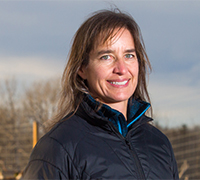 Susan Kutz is a Professor in the Department of Ecosystem and Public Health at the University of Calgary Faculty of Veterinary Medicine, Alberta, Canada. Her areas of expertise include wildlife parasitology, disease ecology, ecosystem health, arctic ecology, climate change and community-based wildlife health surveillance, with a focus on caribou and muskoxen.
Susan Kutz is a Professor in the Department of Ecosystem and Public Health at the University of Calgary Faculty of Veterinary Medicine, Alberta, Canada. Her areas of expertise include wildlife parasitology, disease ecology, ecosystem health, arctic ecology, climate change and community-based wildlife health surveillance, with a focus on caribou and muskoxen.
The unprecedented rate of climate change in the Arctic is having profound impacts on this sensitive ecosystem and threatening the very future of uniquely adapted arctic wildlife species. Wildlife conservation requires that our monitoring and managements systems are sensitive to detect wildlife population health changes and nimble in response. By bridging local, traditional and scientific knowledge we can improve wildlife health surveillance and response in the Arctic. Data on indicators of population health can and should be informed by three complementary approaches: targeted scientific studies, hunter-based sampling, and systematic documentation of local and traditional knowledge. Implementation of this multi-faceted process will ensure early detection of changes in population health, thus allowing more timely adaptive responses.
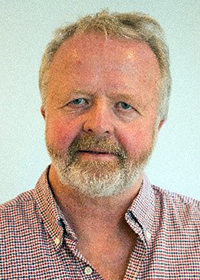 Knut H. Røed is professor in molecular genetics at Department of Basic Sciences and Aquatic Medicine at Norwegian School of Veterinary Medicine, Norwegian University of Life Sciences. His main interest has been to identify the drivers responsible for the genetic structure of wild and domesticated animals with particular focus on the genetic structure of Rangifer across its Holarctic distribution.
Knut H. Røed is professor in molecular genetics at Department of Basic Sciences and Aquatic Medicine at Norwegian School of Veterinary Medicine, Norwegian University of Life Sciences. His main interest has been to identify the drivers responsible for the genetic structure of wild and domesticated animals with particular focus on the genetic structure of Rangifer across its Holarctic distribution.
In his talk about the "Taxonomy and origin of reindeer and caribou, domestication and history of reindeer husbandry" he will illustrate the importance of the last glacial period (115-12 000 years before present) for the contemporary genetic structure of reindeer and caribou population. During the last year's approach of using ancient DNA technology on archaeological reindeer material, he will present data relevant to the history of reindeer domestication, and the genetic processes associated to the pastoral transition in Eurasian Arctic.
birgitta.ahman@slu.se, +46 18 67 23 08